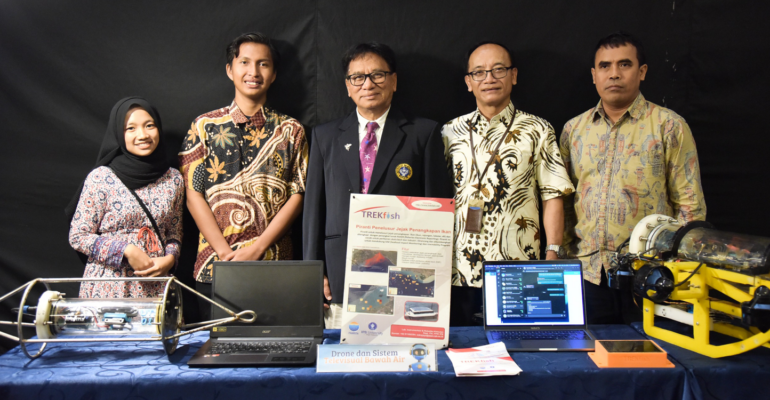IPB University Professor Integrates Observation Vehicle and AI for Blue Ocean and Blue Food Improvement

Environmental degradation in the coastal and marine areas of the Indonesian archipelago has become an increasing and concerning issue of marine environmental health (blue ocean), especially in densely populated islands. These areas are particularly vulnerable to the impacts of environmental degradation that endanger marine life, disrupt ecosystems, and negatively impact socio-cultural, tourism- and fisheries-dependent local economies.
Dealing with this growing problem requires innovative and scalable ways to monitor, manage and remediate the damage done.
In addition to environmental issues, another major problem facing Indonesia is the sufficiency of food for more than 275 million people, to avoid losing the golden generation due to stunting and low average intelligence levels. Increasing food production is a necessity for a country with a large and growing population. Therefore, serious efforts are needed to increase food availability with technological interventions.
As done by Professor of Marine Science and Technology at IPB University, Prof Indra Jaya and team by developing Drone and Underwater Television System. The technology is an integration of the use of underwater observation vehicles and Artificial Intelligence (AI) that encourages the efficiency and effectiveness of the entire business process of the food production system.
“Our research and innovation focuses on the development and implementation of underwater observation vehicles and the utilisation of AI technology to become an innovative solution to the two main problems we face today and in the future,” said the team leader of the innovation, Prof Indra Jaya during the Launching of IPB Innovation in the Field of Artificial Intelligence (AI), Monday (30/9) at the IPB International Convention Center (IICC), Bogor.
Through the development of a water surface drone vehicle, autonomous surface vehicle (ASV), datasets of the condition of the aquatic ecosystem can be observed and collected. Prof Indra Jaya said, with the help of AI technology, the datasets that have been collected are then analysed to obtain quantitative information on the health level of the observed underwater environment.
“Based on this health level, damage mitigation programmes and priority rehabilitation programmes can then be designed and implemented,” he explained.
Another vehicle that has been developed as a complement to surface drones is an underwater drone, an autonomous underwater vehicle (AUV). Observation results or datasets collected by AUVs can be analysed to check or inspect underwater infrastructure, such as the condition of nets in floating net cages (KJA), whether they need to be cleaned immediately from barnacles or not.
“AUV and AI applications can be used, among others, for identification, classification, abundance, biota diversity index, and seabed habitat conditions,” explained Prof Indra.
Meanwhile, the Underwater Televisual system and AI developed for long-term monitoring can be used to monitor the development of aquatic biota farming (fish, shrimp) from time to time. Thus, this technology can predict their growth rate and the optimal time to harvest.
“We believe that the integration of observation vehicles and the development and application of AI can be part of an innovative solution to make a healthy marine environment (blue ocean) and increase food production from the sea (blue food),” he concluded. (*/Rz) (IAAS/RUM)



